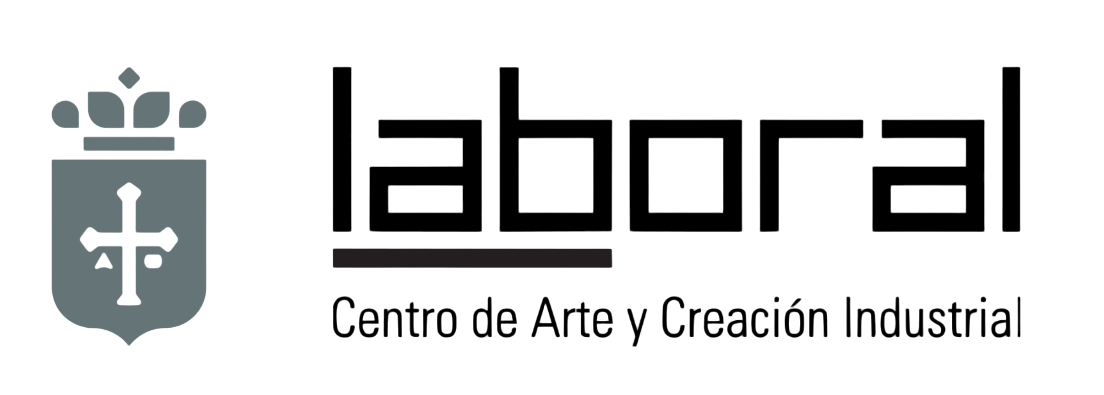Text
The term “translation” comes specifically from geometry and designates the action of carrying from one place to another or moving something or someone. In 3D vocabulary it is used to indicate the movement of an object parallel to an axis. It can also be a linguistic false friend, between French, Spanish and English, of the word “translation.”
The result of a meeting between artists from Nantes and Asturias, the exhibition Traslaciones aims to explore different dimensions of this expression. The idea of translation can thus be interpreted through temporal, geographical or mental data. Traslaciones experiments, in the rooms of LABoral Centro de Arte y Creación Industrial and the Centro de Cultura Antiguo Instituto, based on the works of Neal Beggs, Regina Dejiménez, Bevis Martin, Charlie Youle and Fran Meana, the ambiguities of that movement and of that look. Translations tries to formulate, in sliding mode, correspondences between a memory and a context. The city of Gijón, its political, economic and labor history, its oceanic inscription and its relief form the support and backdrop of this research2.
The exhibition, which brings together very different plastic entities, adopts the profiles of practices that have in common a certain relationship with the fragment and the flow. Neal Beggs links travel with cartography, musical capture, the place of transformation linked to an environment and the traditional white cube of an exhibition. In the work of Regina Dejiménez, the interest in the natural element, and also in science, is improvised as alchemy and a change in the state of matter. The ceramics of Bevis Martin and Charlie Youle remain in a game of confusion between Euclidean perspectives and art historical references. And Fran Meana, for her part, uses here the literary story of anticipation as a pretext to create a sound work that carries visual evocations.
Piracy or hybrid projections, these nomadic iconography that distill the true and the false can be related to mapping or navigation, as understood in the sphere of new technologies. The works created for Traslaciones combine modes of production and manufacturing techniques and also experience dialogues between raw forms and modeling programs. A mix between folk and hardware, antique and high tech, the four artists’ productions, created during their production residency, use both 3D printing and the concept of replica. Translations, as a way of questioning current interferences supported by new communication and information engineering, opts for logic that mutates and derails in its own and figurative sense3.
Behind this notion of gap that is apprehended by a physical and material procedure, lies the idea of analogies and narratives without endings or beginnings, so that anamorphosis serves as the optical key to the exhibition. These mixed temporalities that inhabit the artisanal museum objects revisited by the Martin and Youle tandem can be linked to the relationship that Neal Beggs established between the Spanish War and the pop song, for example. The installation and vocal device of Fran Meana and the confusion caused by a monologue coming from nowhere, can be related to the scenography made by Regina Dejiménez in which symbologies and a reading that borders on spiritualism are elaborated.
A traveling machine in all its forms, classically identified with distant space and the long-distance journey, displacement was for a long time related to a generator of potential stories fluctuating between fantasy and authenticity, daydreams and truths. As a counterpoint, as an invented exile, Traslaciones is presented as an allegory of this time in which it seems that distances are shrinking and time is flattening.
Promoting movements in parallel, interpreting and justifying a cultural history, are the horizons that the exhibition activates, creating fictions from different realities. The works of Neal Beggs, Regina Dejiménez, Bevis Martin, Charlie Youle and Fran Meana, prioritizing the virtual and trompe l’oeil, talk about the world by showing the viewer types of broken perceptions.
TransfersIt claims, to the extent of a possible contemporary dimension, the loss of reference points and definition as would be done with an improbable representation or geometry. The exhibition aims, therefore, for the visitor to become the passenger of this kind of iconoclastic pop science fiction: with a schizophrenic sensation that seems to suggest that time moves without having changed location.
GRADES
1. Novalis, Le brouillon général, Allia, Paris 2000.
2. «… what you were going to see on your trips is that the world is interpreting for the cinema, it does it constantly, and television is that, the interpretation for the cinema of the entire world; So traveling is going to see “what moment in the history of the media” the city, a specific city, belongs to. Gilles Deleuze, Lettre à Serge Daney, optimism, pessimisme et voyage, in Pourparlers, les éditions de Minuit, 1990.
3. “But to be able to see in order to show, you have to find angles of view, experiment, move the admitted limits, move observation through space and time.” Marc Augé, L’art du décalage, in Multitudes Web, June 2007.
